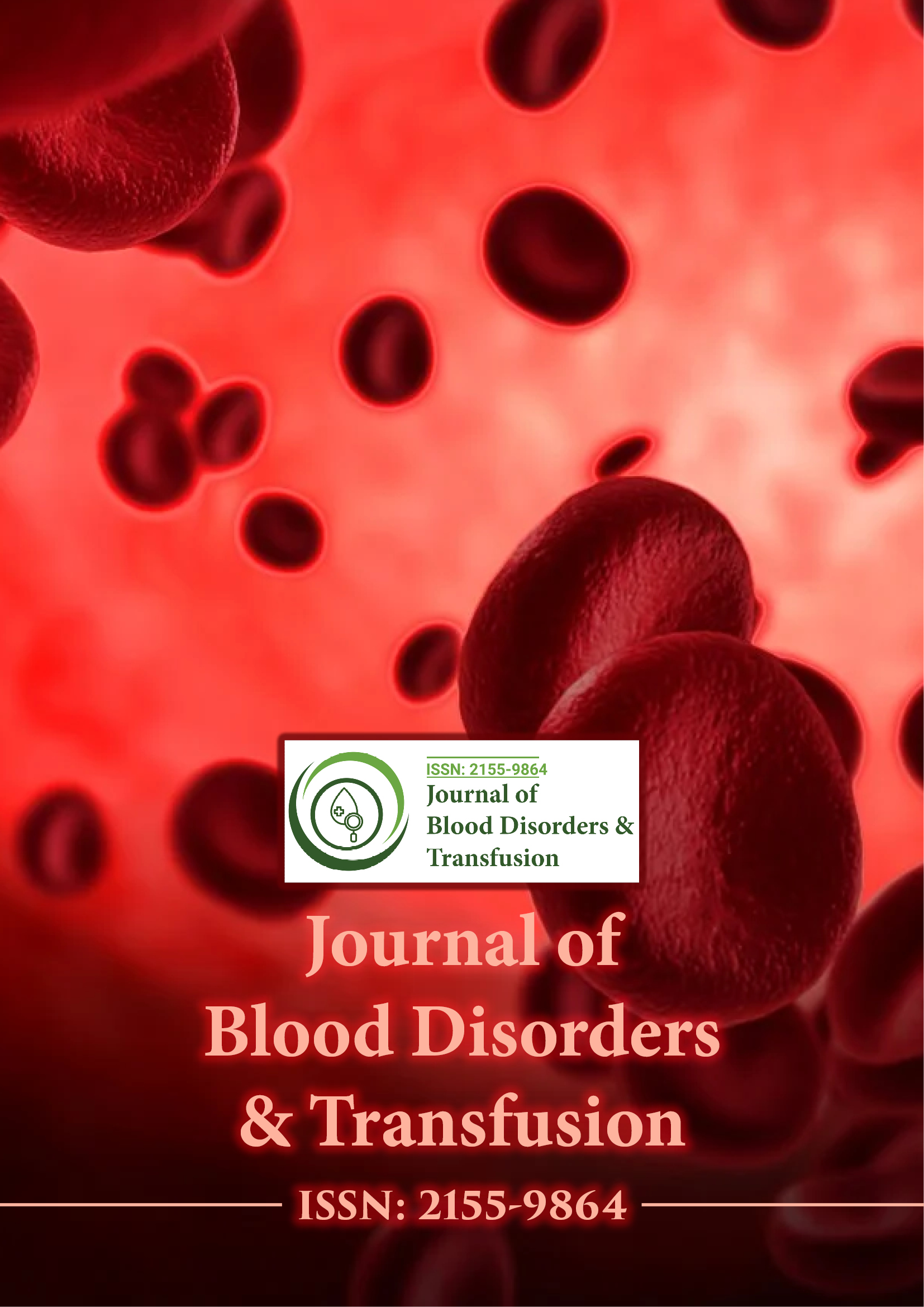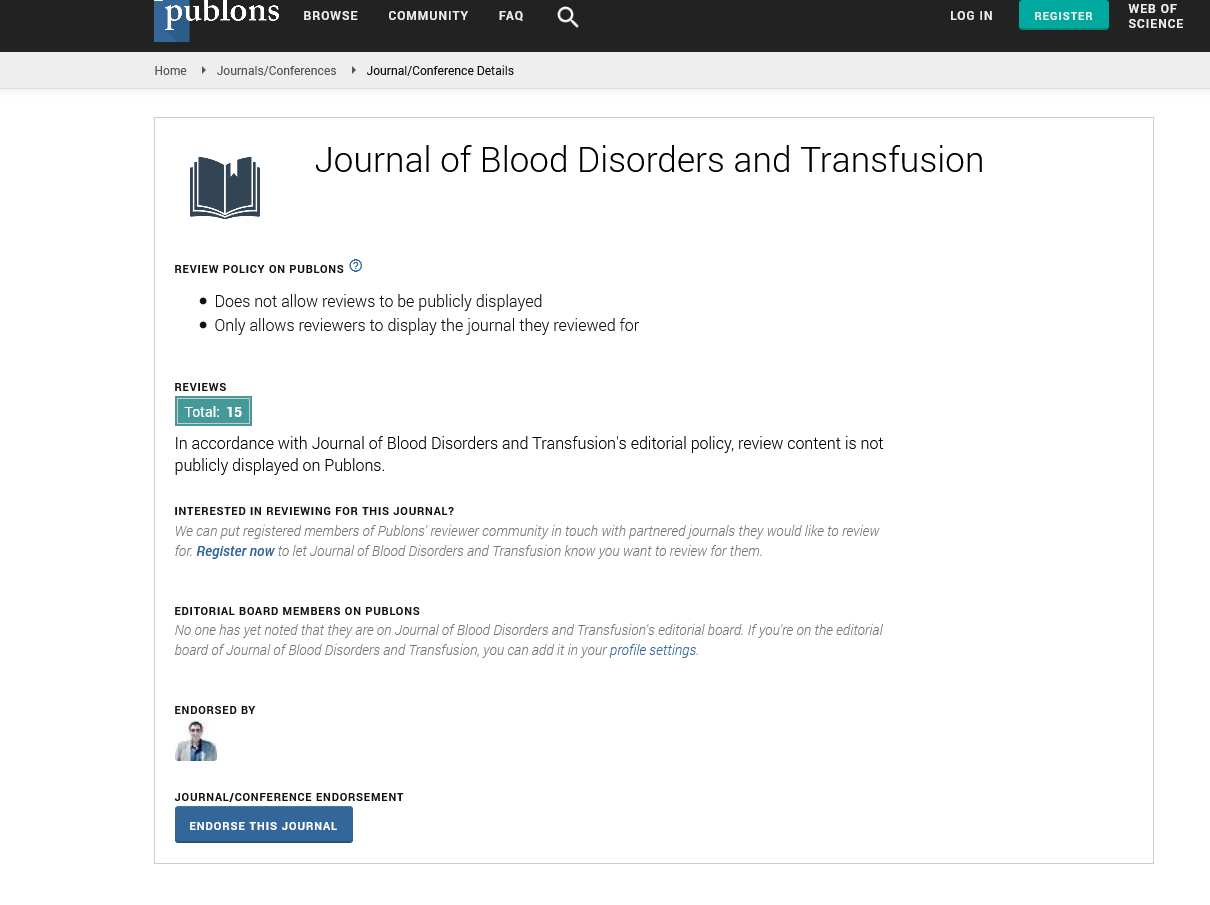Indexed In
- Open J Gate
- Genamics JournalSeek
- JournalTOCs
- Ulrich's Periodicals Directory
- RefSeek
- Hamdard University
- EBSCO A-Z
- OCLC- WorldCat
- Proquest Summons
- Publons
- Geneva Foundation for Medical Education and Research
- Euro Pub
- Google Scholar
Useful Links
Share This Page
Journal Flyer

Open Access Journals
- Agri and Aquaculture
- Biochemistry
- Bioinformatics & Systems Biology
- Business & Management
- Chemistry
- Clinical Sciences
- Engineering
- Food & Nutrition
- General Science
- Genetics & Molecular Biology
- Immunology & Microbiology
- Medical Sciences
- Neuroscience & Psychology
- Nursing & Health Care
- Pharmaceutical Sciences
A possible new approach for malaria treatment combining selective nutrition and resistance?proof antimalarial drugs
2nd International Conference on Hematology & Blood Disorders
September 29-October 01, 2014 DoubleTree by Hilton Baltimore-BWI Airport, USA
Knox Van Dyke
Keynote: J Blood Disorders Transf
Abstract:
Malarial treatment for young children and pregnant women has been mostly ineffective since deaths of millions occur yearly. Many of these deaths occur in Africa owing to a combination of ineffective treatment and either malnutrition or ineffective nutrition. The key question is what makes young children and pregnant mothers vulnerable to malaria? An important component in the human body which is responsible for keeping malaria under control is the activated macrophage. Activated macrophages have a nitric oxide synthase which is inducible (NOS-2). NOS-2 can make large quantities of nitric oxide in a continuous way which after reacting with forms of oxygen produces chemistry eg. peroxynitrite (OONO.) which can kill parasite. The substrates for NO synthase are L-arginine and oxygen and the products are nitric oxide (NO.) and also L-citrulline which can be recycled back to arginine to react again. A marked deficiency of L-arginine exists in young children with cerebral malaria. Parasites release l-arginase which depletes L-arginine. Malarial patients also release assymetrical dimethyl arginine which inhibits NO synthase. L-arginine is essential to children and its deficiency leaves them vulnerable to disease. (L-arginine and L-citrulline) given continuously, resolves the deficiency of NO production. A further treatment of chloroquine/ bisbenzylisoquinoline or artemisinin/bisbenzylisoquinoline above as outlined in Hematology 2013 should resolve this major problem in malaria.
Biography :
Knox Van Dyke completed his PhD in Biochemistry in the Edward A Doisy?Nobel Prize Department at Saint Louis University in 1966. He did Postdoctoral studies in the Department of Pharmacology at West Virginia University. During this time he developed the first effective drug screening system for antimalarial drugs while screening over 10,000 drugs. Mefloquine and halofantrine were recognized by this screening system and were further developed by Walter Reed and various companies as patented drugs. He has over 300 publications and 150 patents.

